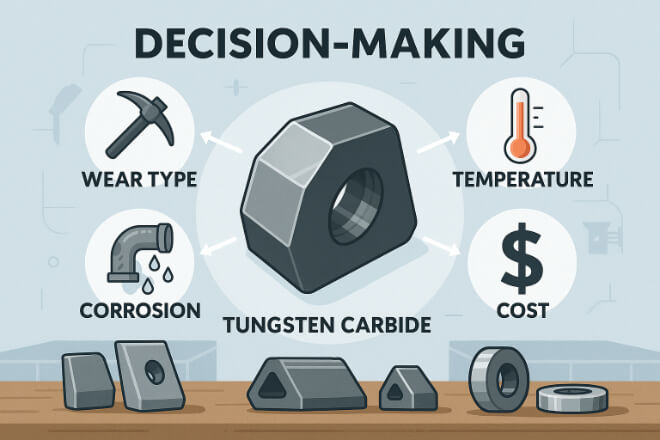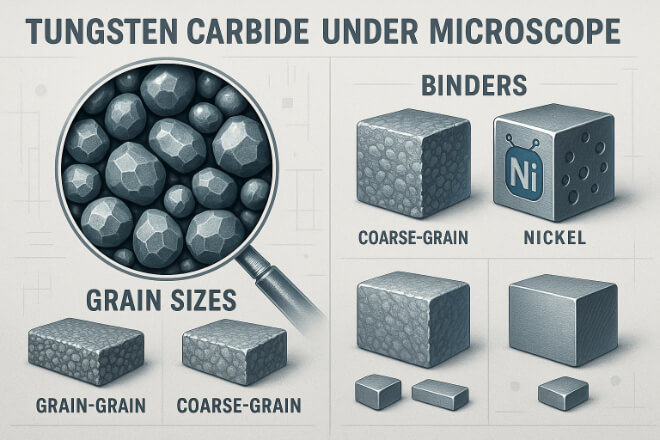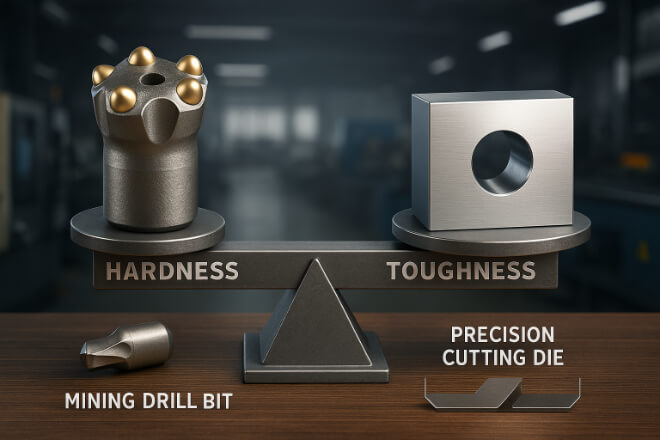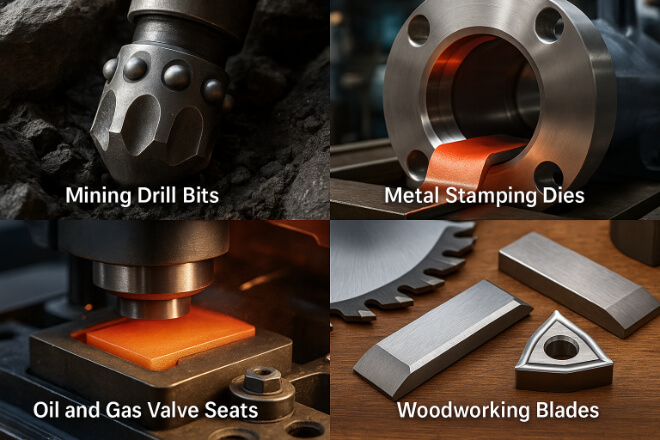텅스텐 카바이드 마모 부품 공구가 심한 마모, 열 또는 충격에 노출되는 산업에서 사용됩니다. 하지만 모든 텅스텐 카바이드가 동일한 것은 아닙니다.
다양한 작업 조건에 맞춰 다양한 등급이 제작됩니다. 잘못된 등급을 선택하면 조기 고장, 비용 증가, 그리고 가동 중단이 발생할 수 있습니다. 적절한 등급을 선택하면 공구 수명과 성능을 극대화할 수 있습니다.
이 가이드에서는 성적의 의미, 성적의 차이점, 그리고 지원서에 맞는 성적을 선택하는 방법을 설명합니다.
목표는 특히 제조업의 의사 결정권자들을 위해 이 프로세스를 간단하고 명확하게 만드는 것입니다. 채광, 석유 및 가스, 금속 성형 및 기타 중공업.
일반적인 텅스텐 카바이드 등급 및 용도
| 학년 유형 | 주요 속성 | 가장 적합한 |
|---|---|---|
| 미세 입자 카바이드 | 높은 경도, 우수한 내마모성 | 정밀 절삭 공구, 다이, 내마모성 노즐 |
| 조립질 카바이드 | 더 높은 인성, 충격 저항성 | 광산 도구, 드릴링 비트, 고강도 마모 부품 |
| 서브미크론 카바이드 | 극한의 경도, 매끄러운 마감 | 의료기기, 정밀가공, 정밀부품 |
| 니켈 결합 카바이드 | 부식 저항성 | 석유 및 가스 밸브, 화학 펌프, 해양 응용 분야 |
등급을 선택할 때 고려해야 할 요소

텅스텐 카바이드 등급을 선택할 때 의사 결정자는 다음 사항을 고려해야 합니다.
마모 유형 – 연마 마모, 충격 마모 또는 혼합 마모인가요?
작동 온도 – 일부 바인더는 고온에서 더 나은 성능을 발휘합니다.
부식 위험 – 부품이 화학적 또는 습한 환경에 있는 경우 니켈 결합 등급이 도움이 됩니다.
비용 대 성능 – 등급이 높을수록 비용은 더 많이 들지만 수명이 훨씬 길어질 수 있습니다.
의사결정자를 위한 팁

귀하의 특정 작업에 맞는 샘플을 테스트할 수 있는 공급업체와 협력하세요.
기존 도구의 마모 패턴을 추적하여 무엇이 잘못되었는지 먼저 파악합니다.
과도한 사양은 피하세요. 가격이 비싼 등급이 항상 성능을 향상시켜 주는 것은 아닙니다.
결론
올바른 텅스텐 카바이드 등급을 선택하려면 경도, 인성, 환경적 요구 사항의 균형을 맞춰야 합니다.
등급의 작동 방식을 이해함으로써 의사 결정권자는 공구 수명을 연장하고, 가동 중단 시간을 줄이며, 효율성을 향상시킬 수 있습니다. 올바른 선택은 비용을 절감하고 장기적으로 신뢰성을 향상시킵니다.
회사에 대한 자세한 내용을 알고 싶으시면 언제든지 문의해 주세요. 문의하세요.



